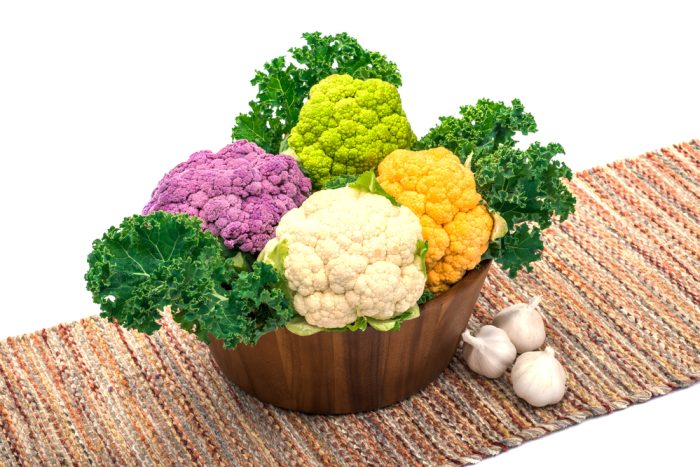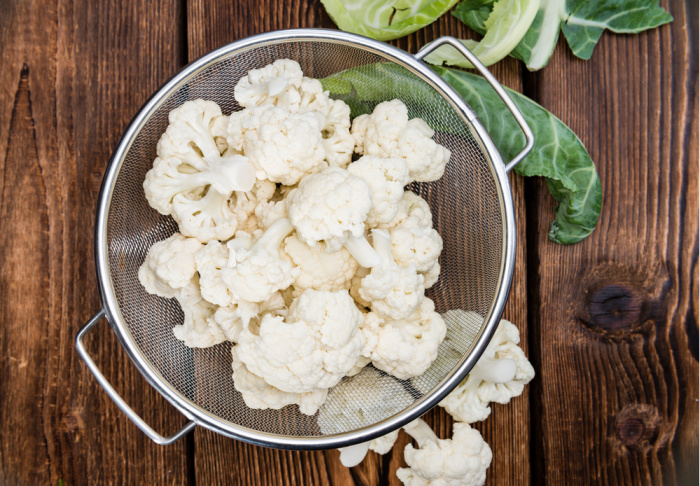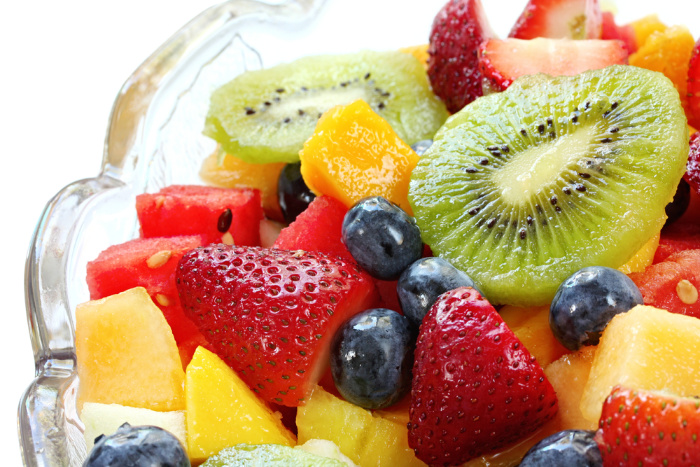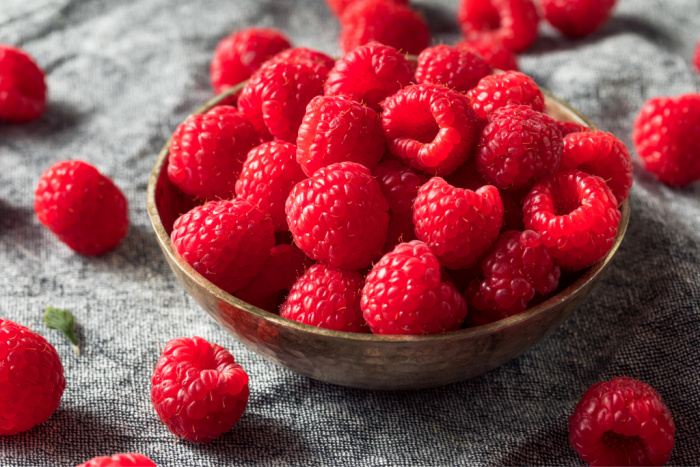Cauliflower: Everything You Need to Know
Without arguing with me, the next time you’re at the grocery store don’t hesitate to pick up a head of cauliflower to take home. Some of you may go on to argue with me anyway and insist that there’s not a whole lot of flavor or just the right texture with this flowered veggie. Even if it’s not one of your favorite vegetables, there are so many different ways that you can enjoy them besides eating it raw or drizzling melted cheese on top. Let’s take the time to discover all about cauliflower: everything you need to know.
Cauliflower: Everything You Need to Know
So why am I making such a big deal about cauliflower? After all, it’s just like every other vegetable. Wrong! Were you aware of just how healthy eating cauliflower is for you? It happens to be a great and significant source of so many vitamins and minerals that help you to stay healthy. Here’s more on cauliflower and everything else you need to know about it.
Fun Facts of Cauliflower
Did you know that cauliflower wasn’t widely grown in the United States until some time in the 1900s? It was also not until the 16th century that the vegetable was introduced to Europe, though it had been enjoyed in Asia and the Mediterranean world for several centuries prior.
If you’re ever thinking about growing cauliflower, just keep in mind that it can be very difficult to grow. That’s because it’s extremely sensitive to heat and cold, along with other elements.
It turns out that the stem and the leaves on the cauliflower plant are also nutritious and not all that bad to eat, especially if you put them in a soup or a salad.
Steaming your cauliflower is the best way to cook the vegetable in order to keep most of its vitamins and minerals. If you still prefer to boil your cauliflower, just be sure to not overdo it. No more than 5 minutes should do the trick.
So What’s the Difference Between Cauliflower and Broccoli?
You’ve probably noticed that broccoli and cauliflower are fairly similar in almost every way. After all, they do come from the same family (Brassicaceae) along with Brussel sprouts and cabbage. You also eat the flowering buds on each of these vegetables. So how do they differ?
For starters, the flowering buds on cauliflower are more densely packed together, but with broccoli the buds are more spread apart. You can expect fewer carbs and calories with cauliflower, but broccoli contains more minerals and vitamins.
Varieties of Cauliflower
Though you usually only find white cauliflower at the grocery store, it also comes in three other colors, orange, purple, and green. Each of them provides you with not only alluring colors and shapes but nutrition as well.

White
White cauliflower is the most common type that you will find and it has a great taste too.
Orange
The brightly orange colored cauliflower is similar to the white, but it contains 25% more vitamin A.
Purple
The purple cauliflower is also fairly similar to the white cauliflower, but it also contains anthocyanins, which not only give its color but provides you with other health benefits as well.
Green
The green cauliflower, or Romanesco, has a spiral design along with a noticeable milder, sweeter flavor than the white variety.
Nutrition Facts
As I mentioned earlier, cauliflower has very few calories and carbs, making them a great veggie to snack on. One single serving provides you with 100 % of your daily recommended value of vitamin C. It’s also naturally filled with fiber, vitamin K, B-vitamins, and other important antioxidants. You’ll even find decent amounts of folate, manganese, potassium, phosphorus, Pantothenic acid, and magnesium.
Health Benefits
With so many nutrients and minerals in cauliflower, it’s no wonder that it provides you with a number of important health benefits as well. Here’s just a few of them.
Helps with Weight Loss
Cauliflower provides you with the feeling of fullness and also helps to regulate your insulin and blood sugar levels. This keeps you from eating too much and you also don’t have to worry about eating too many carbs while you’re doing so.
High in Fiber
With so much fiber, cauliflower promotes regularity along with helping to feed the good bacteria in our gut. This goes on to help with our immunity, anti-inflammation, and even improve our moods as well. (Do you know anybody that could use some cauliflower?)
Reduces the Risk of Cancer and Heart Disease
Researchers have discovered that people who eat more cruciferous vegetables (like cauliflower) are at a lower health risk for certain diseases. Cauliflower contains natural substances that help stop cancer from spreading and growing and lowers your risk of heart disease at the same time by protecting and strengthening your blood vessels.
Important Antioxidants
The antioxidants and bioactive compounds in cauliflower are able to help with reducing inflammation and fighting off oxidative stress. This helps our bodies fight off harmful diseases and slow premature aging.
Helps You Detox
The natural compounds in cauliflower can help your body detox harmful chemicals and toxins out of your body more quickly. They also can aid you with a healthier liver.
Proper Way to Cut Cauliflower
Yes, there is a right and wrong way to cut cauliflower. It took me a while to figure that out. First, you’ll need to remove the leaves, but don’t throw them out. (Use them in a salad or pour a dab of oil and salt on them.)
Next, you’ll want to place the cauliflower stem side down and then cut it in half. Then you’ll cut each of those halves into halves yet again.
Now you have four quarter pieces that you’ll want to place stem side down and then cut once more. At this point the florets should easily come off of the stems and you can go on to breaking them into smaller pieces by hand.
Storing Cauliflower
The best way to store raw cauliflower is in a plastic bag in your refrigerator where it will last for just about a week. Be sure not to wash it until you are ready to eat it. Try and store them with the stem facing down so that the edible florets are not sitting in moisture. Washed and cut cauliflower will last in your refrigerator for about 3 to 4 days.
Final Word
If you’ve grown tired of eating cauliflower raw, or the same way as you always have, check out these 48 delicious cauliflower recipes that will have you once again excited about eating this nutritious vegetable.
Cauliflower can also be used as a substitute instead of using legumes, grains, and even when making pizza crust to keep your carbs low. Here’s how you can get started. What do you think about cauliflower: everything you need to know? Please keep prepping and stocking up, we must. May God bless this world, Linda
Copyright Images: Cauliflower Deposit photos_75415547_s-2019, Cauliflower Varieties Deposit photos_67545259_s-2019






















When I make bread and bread pickles I add cauliflower and baby onions. Delightful.
Hi Chris, oh my gosh, I remember my mom doing this!! Yum! Linda
Instead of using potatoes in my salads (potato salad, red potato dill salad) I use cauliflower. Still has the great flavor, but much healthier.
Hi Lucie, what a great idea for making potato salad with cauliflower!! I love this idea! Linda